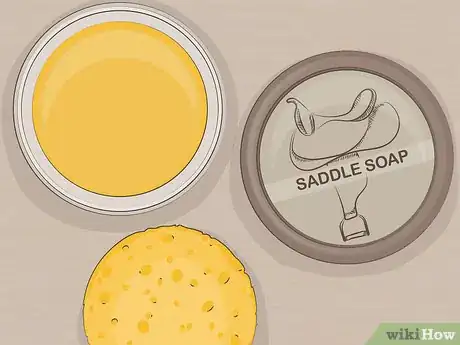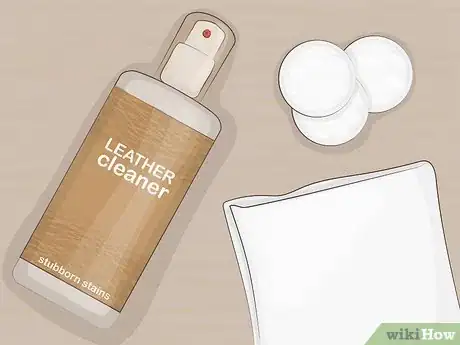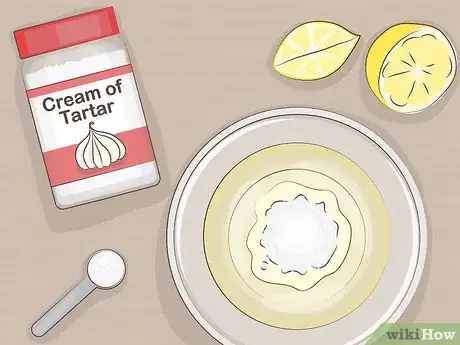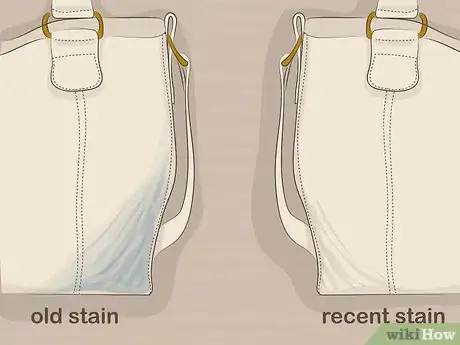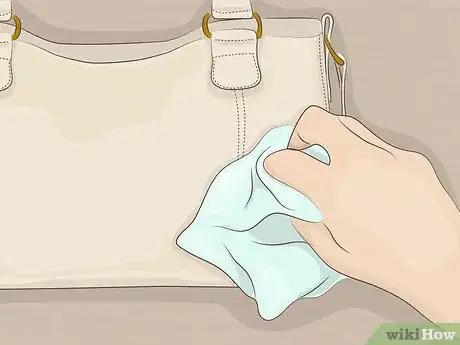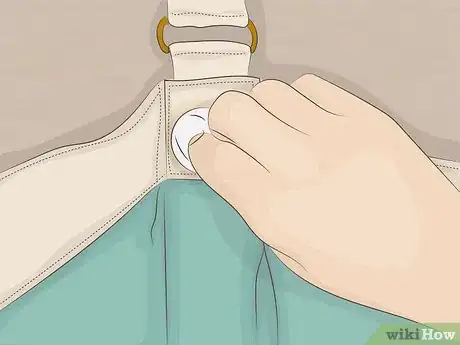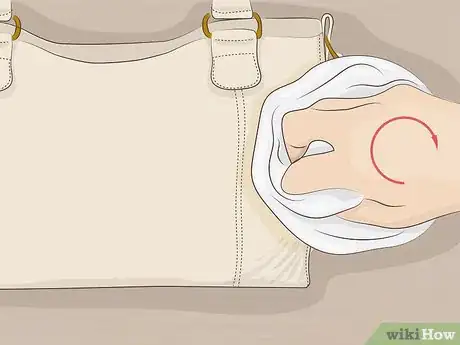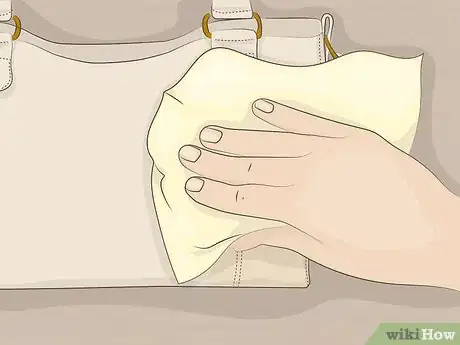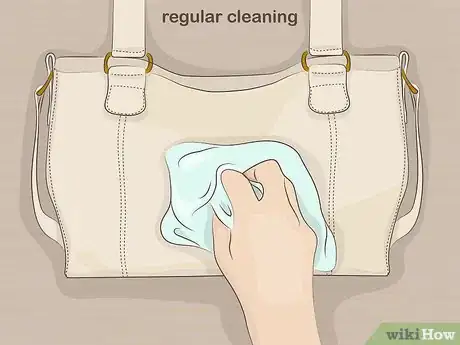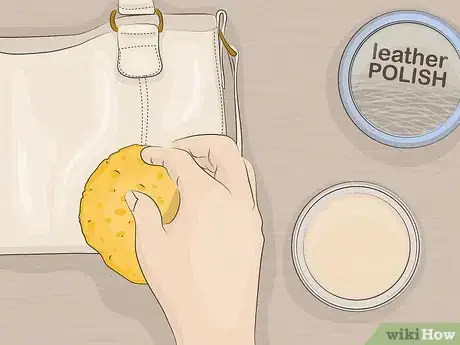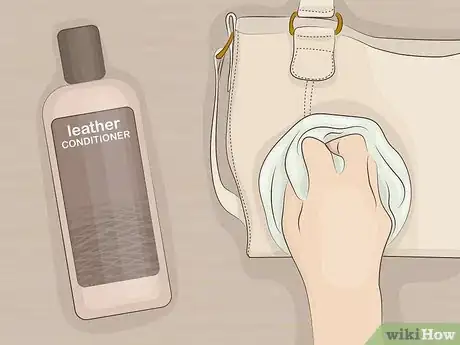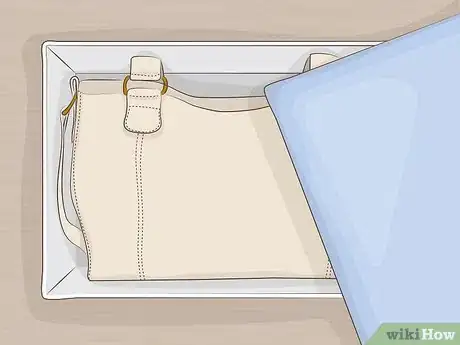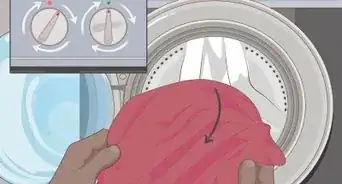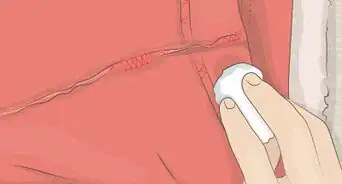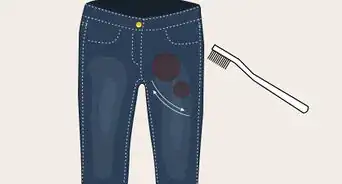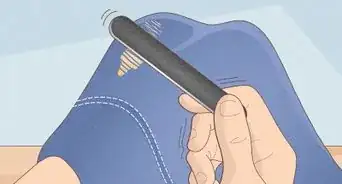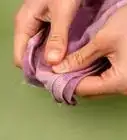This article was co-authored by Mallika Sharma. Mallika Sharma is a Certified Leather Care Technician and the Founder of The Leather Laundry, a niche spa service for luxury leather gear in India. Mallika specializes in leather cleaning, coloring, repairing, and restoring for shoes, handbags, jackets, wallets, belts, and sofas. She holds a Master’s degree in Finance and Investment from the University of Edinburgh Business School. Mallika is a certified Professional Leather Care Technician and trained with the globally reputed leather care company, LTT in the United Kingdom.
There are 9 references cited in this article, which can be found at the bottom of the page.
This article has been viewed 41,738 times.
Finding out that the dye from your new pair of jeans has transferred to your leather items can be a bit of a buzz kill. Furthermore, having to figure out how to successfully remove the stain without damaging the leather is a serious challenge. If you find yourself stuck and unsure of what to do, do not fret! Here are a few things that you can try to remedy the situation.
Steps
Deciding What Product to Use
-
1Use saddle soap for a more reliable option. One of the most popular products for cleaning and protecting leather is saddle soap, which is commonly used on leather saddles.[1] It has also been found to be helpful for stains that are difficult to remove and therefore a popular product of choice when removing dye stains on leather.
- Only use saddle soap in small quantities and make sure that it is thoroughly wiped away from the leather once you are done.[2]
-
2Find a good leather cleaner for a stubborn stain. Sometimes home made remedies and trusted products such as saddle soap might not do the trick. In such cases, try using some quality leather cleaner to remove the stain.[3] Bear in mind that leather cleaner is not a magical product that will instantly remove the stain from your leather. Often you will get the best results by leaving the product in for a while before applying again.[4]
- Try to use leather cleaner that is recommended by the manufacturer of your leather item. Knowing that the product is trusted by the manufacturers themselves can be reassuring.[5]
Advertisement -
3Try using lemon juice and cream of tartar to avoid harsh chemicals. There are a few natural remedies that you can make at home and use to remove the stain on your leather.[6] If you want something that is fuss free and saves you a couple of dollars, you might want to try making your own stain remover before purchasing leather cleaning products.
- Add lemon juice and cream of tartar in a bowl and mix them together until you get a creamy paste consistency.[7] This is a commonly used mixture that typically works to remove stains on leather without any trouble.
- Some may advise against using natural products because dye stains from jeans are often a lot more challenging to remove.[8] However, it does not hurt to try especially if it does not cause any further damage to your leather.
Working on the Stain
-
1Assess the stain on your leather. This will help you determine whether the stain can be removed with ease or if professional help may be needed.[9] Ask yourself how long the stain might have been there for. Does it look like it might have developed over time? If you know for a fact that the stain is recent, you should be able to remove it by following the next few steps.
- If the stain has built up over time, it will be more difficult to remove it on your own. Seek professional help and advice on what can be done to remove the stain.
-
2Clean off surface dirt. Start by removing any dirt or dust particles that are sitting on the surface of the leather. This will help in preparing the leather for the treatment process.[10] Take a warm, damp cloth and use it to gently wipe off dirt and begin to do some surface cleaning.[11]
- Do not scrub the leather as you wipe it clean. This could make the stain harder to remove and potentially damage the material.[12]
-
3Do a spot test. Before applying any product to the stained area, it is recommended to find a different spot that is relatively hidden and do a small test. This will show how the product will react to the leather and help you determine whether or not it is safe to use.[13] The last thing you want to do is unintentionally damage the material beyond repair.
-
4Apply the stain remover. Take a clean cloth to gently work the product into the stained area. Make circular motions and avoid scrubbing the leather too hard as this can cause damage to the material. If the stain persists, leave the product in for a few minutes to an hour before applying more.[14] Continue repeating this step until you are satisfied with the results.
- Make sure that you use an appropriate type of cloth that will not irritate or damage your leather. Using microfibre cloth is recommended because it is made of soft and lint free material.
-
5
Caring for Your Leather
-
1Clean your leather on a regular basis. Performing regular maintenance is important if you want to keep your leather items in good condition. The quality of leather is especially hard to maintain if not properly cared for. However, cleaning leather can be as simple as using a damp cloth to wipe off any accumulated dirt or dust on the surface.[17]
-
2Polish your leather for a nice shine. This will keep the material looking healthy. Using leather polish can also prevent your leather from looking old and worn over time from repeated use.[18] Although this is mainly an aesthetic preference, some polishing products also contain moisturising properties that can be beneficial for your leather.[19]
-
3Use leather conditioner. Think about treating your leather similarly to treating your own skin. In order to maintain its softness, leather will also need to stay moisturised.[20] Proper conditioning will prolong its durability and therefore prevent cracking.
- Unlike leather polishes, conditioners do not provide shine. However, they contain longer lasting moisturisers and provide better protection.
- How often you use conditioners may depend on your personal preference. Some people choose to condition their leather every 6 to 12 months.[21]
-
4Store your leather items in a closed space. It is important that leather is protected from different things in our environment that can be harsh towards it. For example, keeping your leather items away from direct sunlight will help to prevent discolouration. You can also prevent your leather from drying and cracking by making sure that it is free from dirt, dust and sand.[22] Be mindful of where you store your leather items especially ones that you do not use often.
- Choose a storage space that is away from windows. This can minimise exposure to the sun and any dirt or dust brought by the wind.
Expert Q&A
-
QuestionHow do you repair and restore an old leather jacket?
 Mallika SharmaMallika Sharma is a Certified Leather Care Technician and the Founder of The Leather Laundry, a niche spa service for luxury leather gear in India. Mallika specializes in leather cleaning, coloring, repairing, and restoring for shoes, handbags, jackets, wallets, belts, and sofas. She holds a Master’s degree in Finance and Investment from the University of Edinburgh Business School. Mallika is a certified Professional Leather Care Technician and trained with the globally reputed leather care company, LTT in the United Kingdom.
Mallika SharmaMallika Sharma is a Certified Leather Care Technician and the Founder of The Leather Laundry, a niche spa service for luxury leather gear in India. Mallika specializes in leather cleaning, coloring, repairing, and restoring for shoes, handbags, jackets, wallets, belts, and sofas. She holds a Master’s degree in Finance and Investment from the University of Edinburgh Business School. Mallika is a certified Professional Leather Care Technician and trained with the globally reputed leather care company, LTT in the United Kingdom.
Certified Leather Care Technician Always check out the kind of leather in question from the label of the jacket. Restoration techniques are different depending on the type of leather. From there, apply the right technique to clean or restore. If you consider going to a repair shop, let them know whether you want a mended look or more of a patchwork style.
Always check out the kind of leather in question from the label of the jacket. Restoration techniques are different depending on the type of leather. From there, apply the right technique to clean or restore. If you consider going to a repair shop, let them know whether you want a mended look or more of a patchwork style.
Warnings
- Be careful that you do not attempt to remedy any type of stain on unfinished leather. You can generally tell the difference between finished and unfinished leather by the fact that unfinished leather typically lacks sheen.[25] If you find that you have stained unfinished leather, consult a professional for help with the issue.⧼thumbs_response⧽
References
- ↑ https://www.racked.com/2016/10/7/13150428/leather-jacket-clean-protect
- ↑ https://www.racked.com/2016/10/7/13150428/leather-jacket-clean-protect
- ↑ http://www.tellason.com/the-journal/guide-to-removing-denim-stains/
- ↑ http://www.home-ec101.com/how-to-get-rid-of-blue-jean-stains-from-leather-seats/
- ↑ http://www.home-ec101.com/how-to-get-rid-of-blue-jean-stains-from-leather-seats/
- ↑ https://www.tipsbulletin.com/how-to-clean-leather-with-simple-homemade-leather-cleaning-recipes/
- ↑ https://www.tipsbulletin.com/how-to-clean-leather-with-simple-homemade-leather-cleaning-recipes/
- ↑ http://www.home-ec101.com/how-to-get-rid-of-blue-jean-stains-from-leather-seats/
- ↑ Mallika Sharma. Certified Leather Care Technician. Expert Interview. 7 January 2021.
- ↑ https://www.familyhandyman.com/cleaning/how-to-clean-leather-furniture-stains-with-natural-products/view-all/
- ↑ Mallika Sharma. Certified Leather Care Technician. Expert Interview. 7 January 2021.
- ↑ http://www.tellason.com/the-journal/guide-to-removing-denim-stains/
- ↑ https://www.familyhandyman.com/cleaning/how-to-clean-leather-furniture-stains-with-natural-products/view-all/
- ↑ http://www.home-ec101.com/how-to-get-rid-of-blue-jean-stains-from-leather-seats/
- ↑ Mallika Sharma. Certified Leather Care Technician. Expert Interview. 7 January 2021.
- ↑ http://www.tellason.com/the-journal/guide-to-removing-denim-stains/
- ↑ https://www.josbank.com/how-to-care-for-leather
- ↑ https://www.josbank.com/how-to-care-for-leather
- ↑ https://www.artofmanliness.com/articles/how-to-care-for-leather/
- ↑ https://www.racked.com/2016/10/7/13150428/leather-jacket-clean-protect
- ↑ https://www.artofmanliness.com/articles/how-to-care-for-leather/
- ↑ https://www.josbank.com/how-to-care-for-leather
- ↑ http://www.housecleaningcentral.com/en/cleaning-tips/stain-removal/leather-stain.html
- ↑ https://www.familyhandyman.com/cleaning/how-to-clean-leather-furniture-stains-with-natural-products/view-all/
- ↑ https://www.tipsbulletin.com/how-to-clean-leather-with-simple-homemade-leather-cleaning-recipes/
